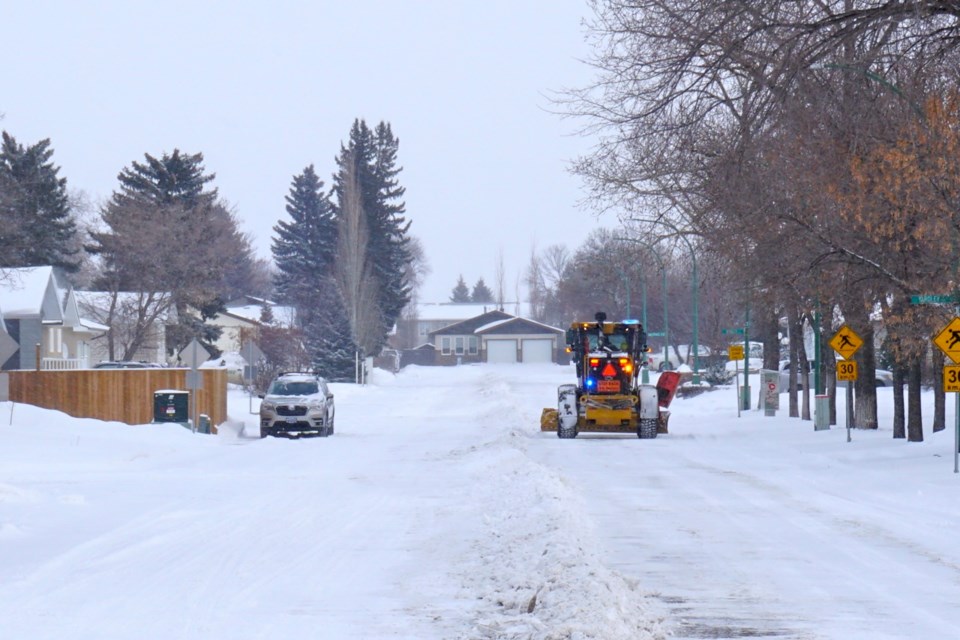It was billed as potentially a generational snowstorm, and it lived up to the hype.
Southeast Saskatchewan was smacked with a powerful blizzard last week. It forced schools to close, businesses to shut down and a variety of services to be suspended. The message by the early afternoon of April 13 was simple: if you’re not an essential service, stay home.
And for the next two days, we were told that if we didn’t have to be on the road, then stay home so that snow removal crews could do their jobs.
(It helped that April 15 was Good Friday, so a lot of people had the day off).
For those who experienced this blast from Mother Nature, they won’t soon forget it.
It also proved to be one of the sternest tests of Estevan’s snow removal protocol since it was implemented nearly a decade ago.
Snow removal is one of those things that you can always justify to residents, as long as it’s done properly. You don’t want to have crews working overtime to deliver the service to clear a couple of inches of snow. That would be wasteful.
But you can’t turn it into a bare-bones service, either. Eventually, you’ll get the storms that will bring so much snow that the roads become impassable. (We’ve seen that in this community in the past).
City crews and a host of contractors were out on April 13 to attack the roads as quickly as possible so that they were somewhat drivable. They did the best they could. Eventually, they were going to lose the battle, because you have lots of snow falling, heavy winds blowing, dozens of kilometres of roads in the community and only so many workers and pieces of equipment available.
And once the worst of the storm was finished, they had to shift their priorities to clearing the roads, especially the arterial roads and the Priority 2 roads.
There were a few complicating issues. One is that we had a weather aftershock looming with more snow in the forecast. So, if they didn’t clear out the snow, the situation was only going to get worse.
The other issue was the timing. Dealing with a snowstorm in mid-April is not the same as dealing with the last big dump in December 2021. The city had to decide what to do with all of this snow, since the usual snow dump sites weren’t available.
The city is pretty damn good at removing snow in the winter. But they’re not as experienced when it comes to dealing with snow in April.
Last year when we had a big dump in April, the temperatures warmed up a few days later and the snow melted without requiring a big snow removal effort. This year we had a lot more snow from a far more potent system, and thanks to the temperatures and additional snow that came after the storm, an all-out snow removal effort was needed.
You’re never going to make everyone happy with snow removal efforts. Some are going to wonder why their road wasn’t tackled right away, while the road to the south was. Others will want to know why their street is Priority 3 while another road is Priority 2.
And you’ll get some who will wonder why the city spent all of this money on snow removal when the weather will eventually warm up. They’ll say there’s no long-term need to remove all of that snow from the roads.
But most people get it. They understand that you needed to move quickly to keep the roads passable for as long as possible when the snow hit, and you need to remove the snow from the streets once the snow was finished.
After all, everybody – including those who live on quiet residential roads and who drive small cars – has to be able to get to work and drive around the community.
We survived the storm of April 2022, and the snow that followed.
Hopefully, we can now look forward to enjoying more spring-like weather.






